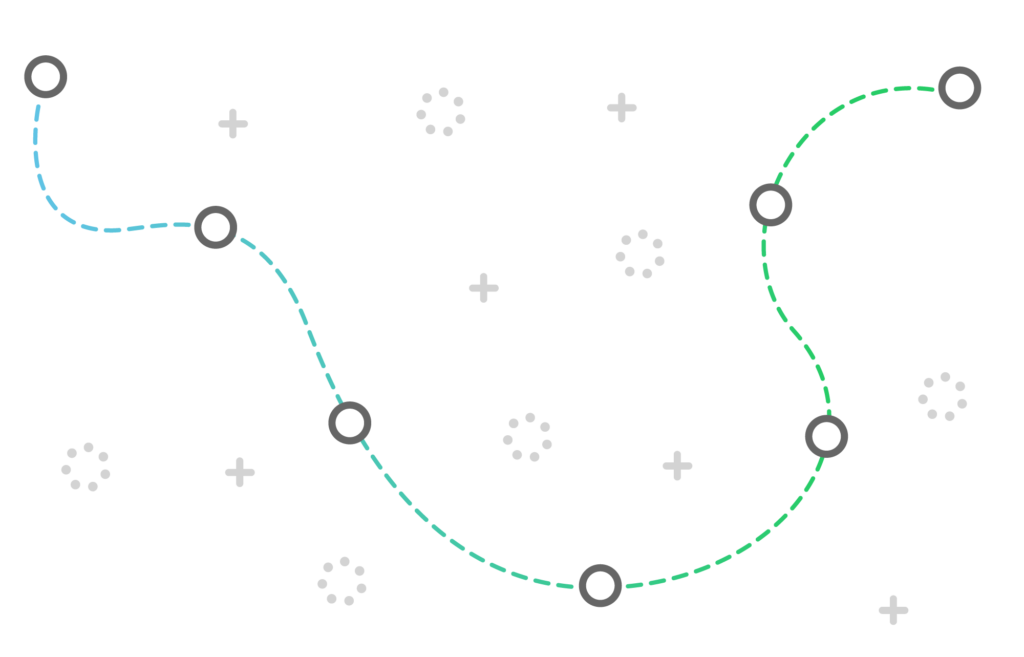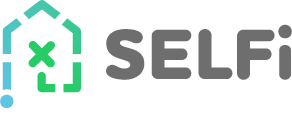There can be a multitude of expenses when buying a home. Whether it be the down payment or the closing costs, the appraisal or various inspections, all fees and factors can certainly add up. In many cases homebuyers will also have to pay mortgage insurance.
It would be wise for mortgage applicants to make certain they understand what their insurance requirements may be and what they will cost.
Mortgage insurance is often confused with homeowners insurance, but they are two completely separate things. Mortgage insurance is designed to protect your lender if you can’t repay your loan while homeowners insurance protects you from financial injury if damage or any other issues occur on your property.
- Mortgage insurance: When obtaining a mortgage loan, lenders often require borrowers to pay for a mortgage insurance policy. In the event a borrower falls behind on their mortgage, the lender uses the policy to recoup their losses.
- Homeowners insurance: Buyers/Borrowers purchase this insurance to cover liability and damage on their properties. If their home is damaged due to weather, broken into, vandalized or otherwise harmed their insurance will assist in covering the costs.
IMPORTANT: Mortgage insurance does not offer protection to the borrower, but it allows the borrower to make a lower down payment when purchasing a home.
What’s the difference between PMI and MIP?
There are two types of mortgage insurance: PMI (private mortgage insurance) and MIP (mortgage insurance premiums). PMI is most common as it’s the insurance required on conventional loans chosen by the lender, while MIP is the insurance necessary for FHA loans. With USDA loans, the Department of Agriculture is the guarantor, so premiums will be paid directly to the USDA as an inclusion in the mortgage payment.
![]()
“Many new home buyers put unnecessary effort into avoiding mortgage insurance. Some delay their home purchase because of it, but that could be a mistake.”
When is mortgage insurance required?
- Conventional loans: With conventional loans, private mortgage insurance is typically required if a down payment is made under 20%. However, conventional loans do not require an upfront mortgage insurance payment. The PMI will be paid monthly in addition to the mortgage.
- FHA loans: When it comes to FHA loans, mortgage insurance will always be needed both upfront and annually, where it will be rationed across monthly mortgage payments.
- USDA loans: USDA loans also require upfront and annual premiums, though they’re referred to as “guarantee fees.”
- VA loans: do not require mortgage insurance. There is a “funding fee,” but this is paid at closing and can be rolled into the loan balance.
4 Types of PMI
Borrower-Paid Mortgage Insurance:
The most common type of PMI is borrower-paid mortgage insurance (BPMI). BPMI is paid as an additional monthly fee with your mortgage payment. BPMI is paid every month until you have 22% equity in your home.
When 22% equity is reached the lender is required to cancel BPMI as long as you’re current on your mortgage payments. Amassing sufficient equity through monthly mortgage payments to get BPMI canceled typically takes around 11 years.
It is also possible to ask the lender to cancel BPMI when you have 20% equity in your home. You must be current on payments while having a satisfactory payment history. Furthermore, there must not be any additional liens on your property. In some instances you may need a recent appraisal to substantiate your home’s value.
Certain loan servicers may allow borrowers to cancel PMI faster based on home value appreciation. Say the borrower accrues 25% equity as a result of appreciation in years two through five, or 20% equity following year five. This may lead to the investor who purchased the loan permitting PMI cancellation after the home’s increased value is established. This may be achieved with an appraisal, a broker’s price opinion (BPO) or an automated valuation model (AVM).
The act of refinancing may be able to get you out of BPMI as well. Though you’ll have to consider the cost of refinancing versus the costs of continuing to pay mortgage insurance premiums. It may also be possible to terminate your PMI early by prepaying your mortgage principal so that you have at minimum 20% equity.
The remaining three types of PMI are not as commonplace as borrower-paid mortgage insurance. However, you may want to understand how they work in the instance one of them appears more enticing, or your lender offers you more than one mortgage insurance option.
Lender-Paid Mortgage Insurance:
With lender-paid mortgage insurance (LPMI) your lender will technically pay the mortgage insurance premium. But in reality you will be paying for it in the way of a somewhat higher interest rate over the life of the loan.
You can’t cancel LPMI when your equity reaches 78% as you can with BPMI since it is built into the loan. Refinancing becomes the only way to reduce your monthly payment. Your interest rate will not go down as soon as you have 20% or 22% equity. Lender-paid PMI is not refundable.
In spite of the higher interest rate, the potential benefit of lender-paid PMI is that your monthly payment may perhaps still be lower than making monthly PMI payments. Because of this, you may be eligible to borrow more.
Single-Premium Mortgage Insurance:
With single-premium mortgage insurance (SPMI), sometimes known as single-payment mortgage insurance, you pay mortgage insurance upfront in a lump sum. This may be performed in full at closing or it can be financed into the mortgage (which may be referred to as single-financed mortgage insurance).
SPMI benefits lie in lower monthly payments compared to BPMI. Moreover, you don’t have to refinance to get out of PMI. However, if you refinance or sell within a three years no portion of the single premium is refundable. In addition, if you finance the single premium you’ll owe interest on it for the entirety of the mortgage. Also, if you do not have sufficient funds for a 20% down payment, you may not have enough money to pay a single premium upfront.
However, the seller or the builder (with new homes) can pay the borrower’s single-premium mortgage insurance. You can always attempt to negotiate this as part of your purchase offer.
Not all lenders offer single-premium mortgage insurance, but if yours does you may be able to save money if planning on staying in your home long term.
Split-Premium Mortgage Insurance:
Split-premium mortgage insurance is the least common type. It’s a hybrid of BPMI and SPMI.
With split-premium mortgage insurance you pay a portion of the mortgage insurance as a lump sum at closing and another portion monthly. You do not have to put together as much additional money upfront as you would with SPMI, and you do not raise your monthly payment by as much as you would with BPMI.
A possible reason for selecting split-premium mortgage insurance is if you have a high debt-to-income ratio. If that happens to be the case, boosting your monthly payment excessively with BPMI would mean not meeting the requirements to borrow as much as necessary to purchase the home you would like.
The upfront premium may range from 0.50% to 1.25% of the loan total. The monthly premium will be established on the net loan-to-value ratio before any financed premium is factored in.
As with SPMI, you can request that the builder or seller pay the initial premium, or you can choose to roll it into your mortgage. Split premiums may be partially refundable once mortgage insurance is canceled or terminated.
![]()
“SELFi started with a simple idea: to offer the absolute lowest interest rates. That's it.”
Mortgage insurance basics to remember:
- Mortgage insurance requirements depend on loan type. Not all loans entail purchasing mortgage insurance, and mortgage insurance rates differ considerably from one loan product to the next.
- Mortgage insurance may be cancelled at a later date. With PMI, you can cancel your insurance once you reach an 80% loan-to-value ratio meaning 20% of the home’s value has been paid off. FHA loans may be cancelled after 11 years if a minimum 10% down payment was made.
- Mortgage insurance premiums differ. Conventional mortgage insurance rates vary depending on your down payment amount and credit score. FHA loans are 1.75% upfront, and anywhere from 0.45% to 1.05% annually. USDA rates are 1% upfront and 0.35% each year.
- Mortgage insurance only protects the lender. Although it’s the borrower paying the bill, mortgage insurance doesn’t protect borrowers when they fall behind on their mortgage. The lender still has the ability to foreclose on the home and are still able to recoup their losses through the insurance policy.
Why PMI is worth it
Many new home buyers put unnecessary effort into avoiding mortgage insurance. Some delay their home purchase because of it, but that could be a mistake. With home prices rising 12% nationwide from November 2019 to November 2020 (according to the National Association of Realtors) attempting to wait and save a substantial down payment to avoid PMI may cause the buyer to chase home prices for quite some time.
Mortgage insurance allows you to buy at today’s prices and plummeting mortgage rates. It eliminates the risk of both skyrocketing in the future.

The increase in conforming loan limits provides an opportunity to better your financial situation with a refinance.
Subscribe to our mailing list
Stay up-to-date on interest rates, loan options, and money saving tips.

